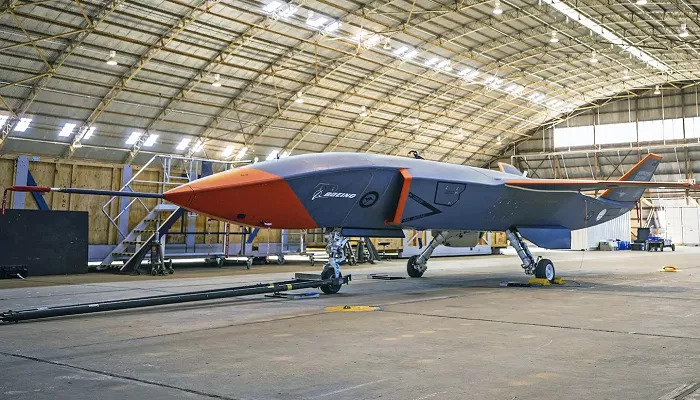The U.S. Navy is increasingly focused on the MQ-28 Ghost Bat, a drone developed in collaboration with Australia, as a potential model for future industrial partnerships. While the MQ-28 has primarily been associated with the U.S. Air Force, the Navy’s growing interest signals a possible shift in its approach to collaborative combat aircraft (CCA) technology.
In a recent statement, Capt. Ron Flanders, public affairs officer for the U.S. Navy’s Office of Research, Development, and Acquisition (RDA), explained that the MQ-28 partnership with Australia exemplifies a new model of joint defense development. He highlighted the platform’s AI-driven autonomy and modular design as key assets for the Navy’s future air combat strategies.
A New Approach to Joint Development
The MQ-28, developed with Boeing and the Royal Australian Air Force (RAAF), first emerged in 2019 as the Airpower Teaming System (ATS). The drone’s initial flight took place in 2021, and Australia has since built and tested several prototypes. Boeing plans to continue production in Queensland, Australia, where the RAAF aims to acquire at least 10 MQ-28s by the end of 2025.
The drone’s design emphasizes flexibility, including the ability to rapidly swap mission-critical components, which makes it suitable for a range of operations, including both crewed and uncrewed combat missions.
Expanding the Role of the MQ-28
While the Australian Defense Force has been the primary operator, the U.S. Air Force has also shown interest, using the MQ-28 as a “technology feeder” for its CCA program. However, it is the U.S. Navy’s recent comments that have drawn attention, suggesting the drone could play a role in future carrier-based operations.
The Navy is still in the early stages of defining its CCA program, focusing more on its MQ-25 Stingray tanker drone for now. However, the MQ-28’s modular design and Boeing’s exploration of carrier-compatible variants suggest it could become part of the Navy’s long-term strategy.
Challenges and Opportunities for the MQ-28
One of the main challenges for the MQ-28 in Navy operations is its larger size and higher cost compared to the more disposable drones the Navy typically favors. However, Boeing’s renderings of a carrier-based variant and its ongoing discussions with the U.S. Navy indicate that the drone could potentially be adapted for these purposes.
The U.S. Navy’s interest in the MQ-28 also ties into its ongoing relationship with Australia, especially through the trilateral AUKUS defense pact, which emphasizes collaboration in advanced technologies, including drone warfare.
Cross-Service Cooperation and Testing
The MQ-28 has already been involved in testing in both the U.S. and Australia. Notably, Cmdr. James Moore Licata, a key figure in the U.S. Navy’s test programs, has worked directly on U.S.-Australia CCA development. The Navy’s involvement in the MQ-28 test program indicates that the drone could play a key role as the service refines its CCA capabilities.
Additionally, the U.S. Navy and the Royal Australian Navy both operate the MQ-4C Triton, which provides additional opportunities for collaboration in uncrewed aviation.
Looking Ahead
As the Navy continues to define its CCA program and explore new technologies, the MQ-28 could emerge as a critical asset. Whether as a testing platform or as part of future carrier-based operations, the drone’s versatility and potential for collaboration between the U.S. and Australia position it as a promising candidate for the Navy’s evolving needs.


